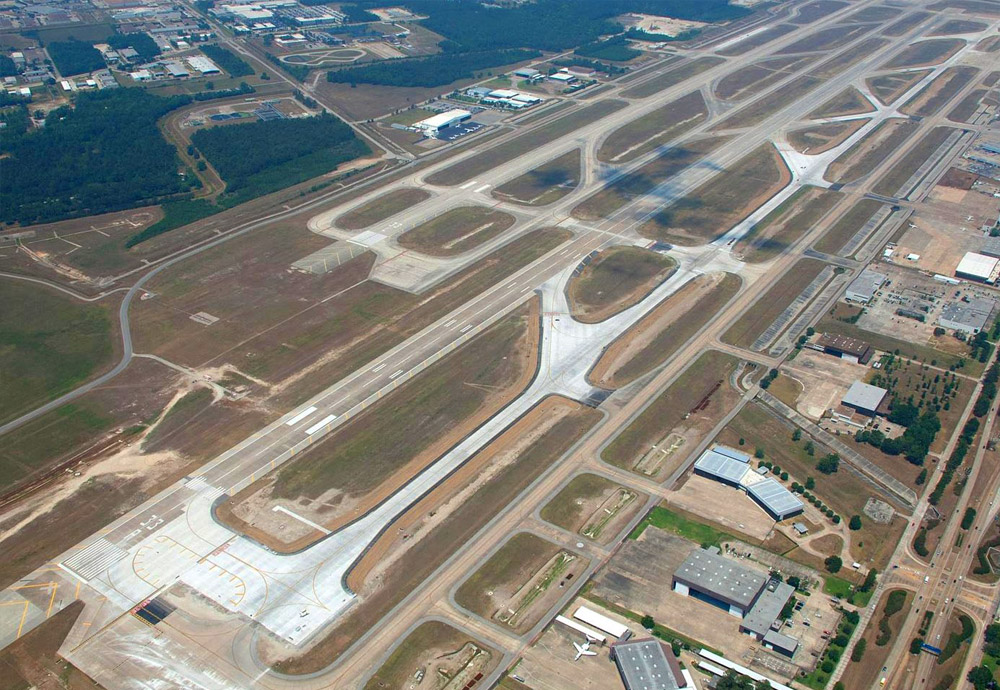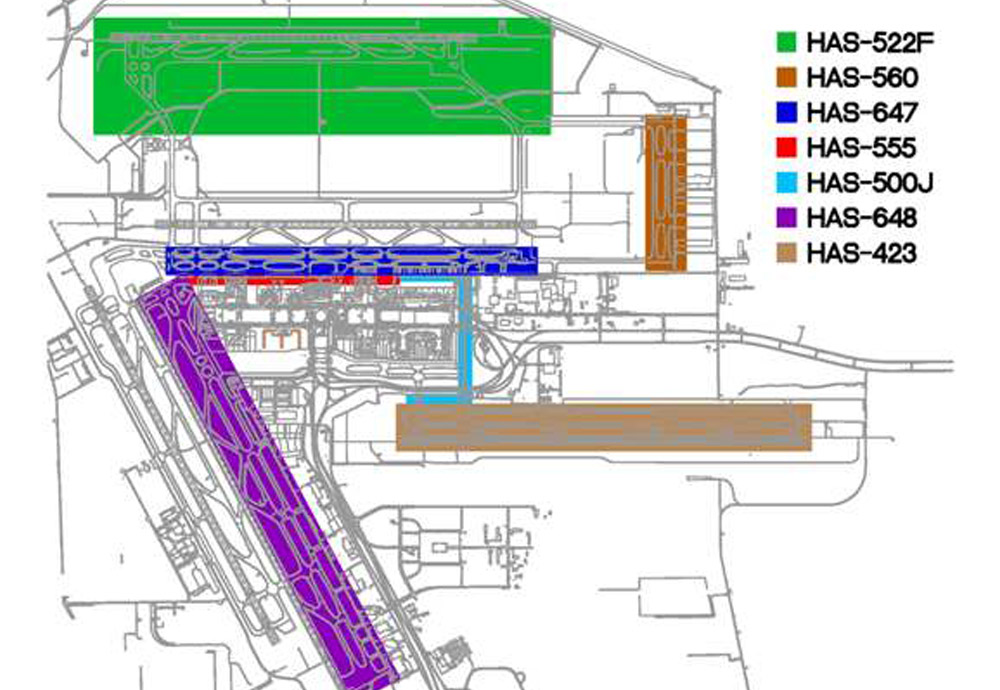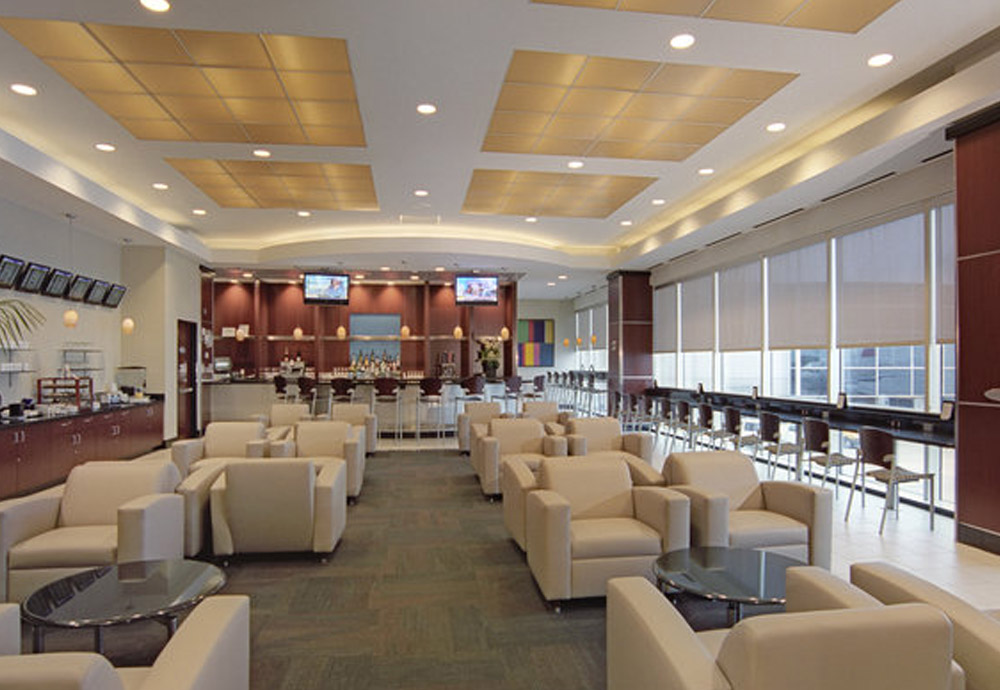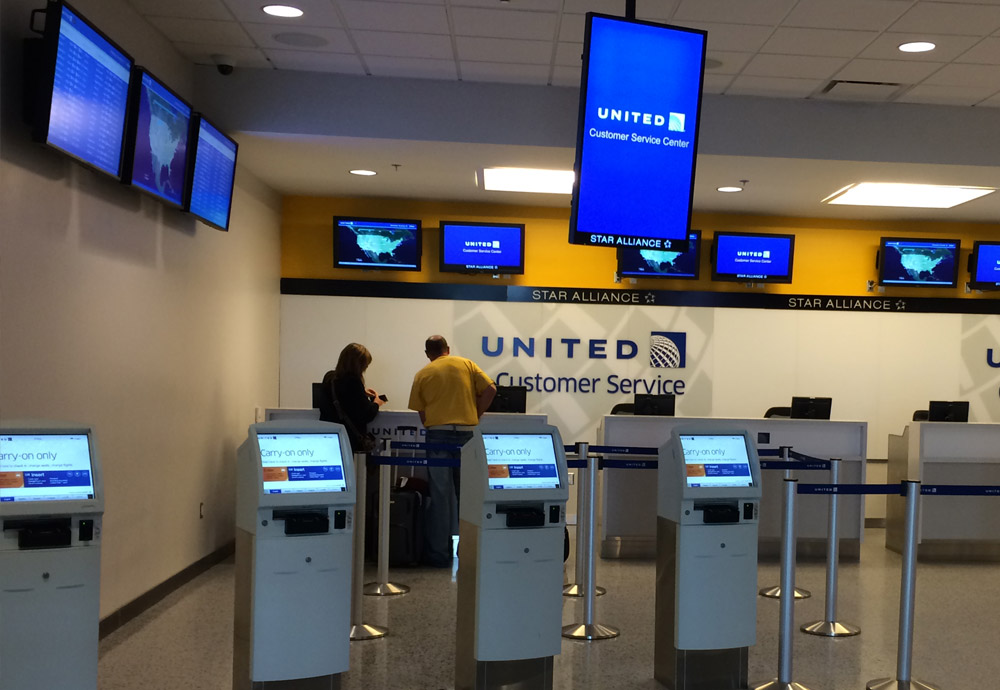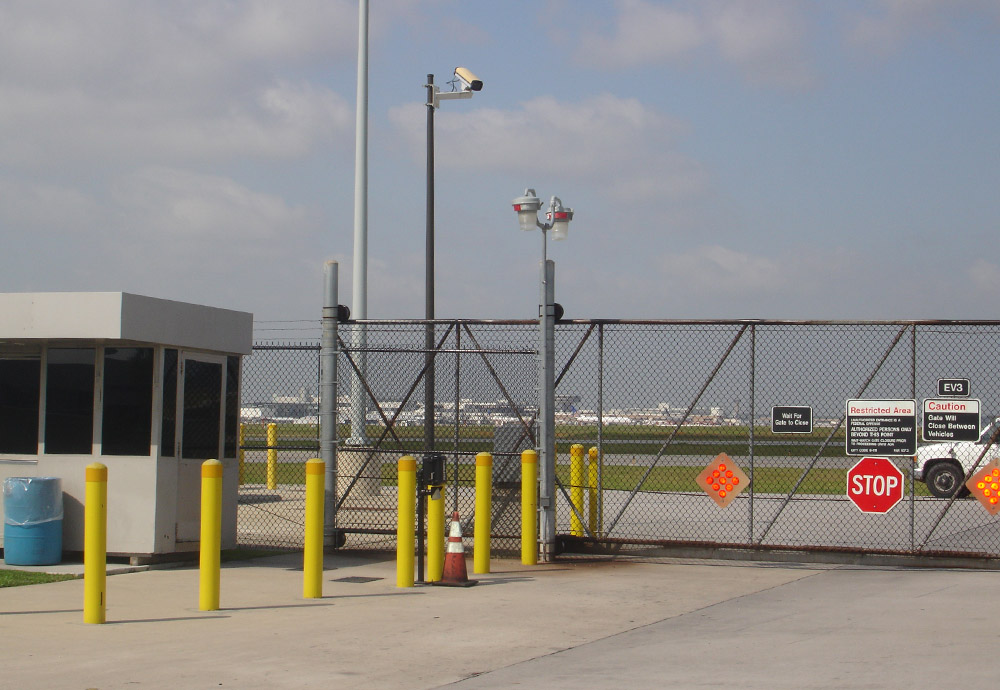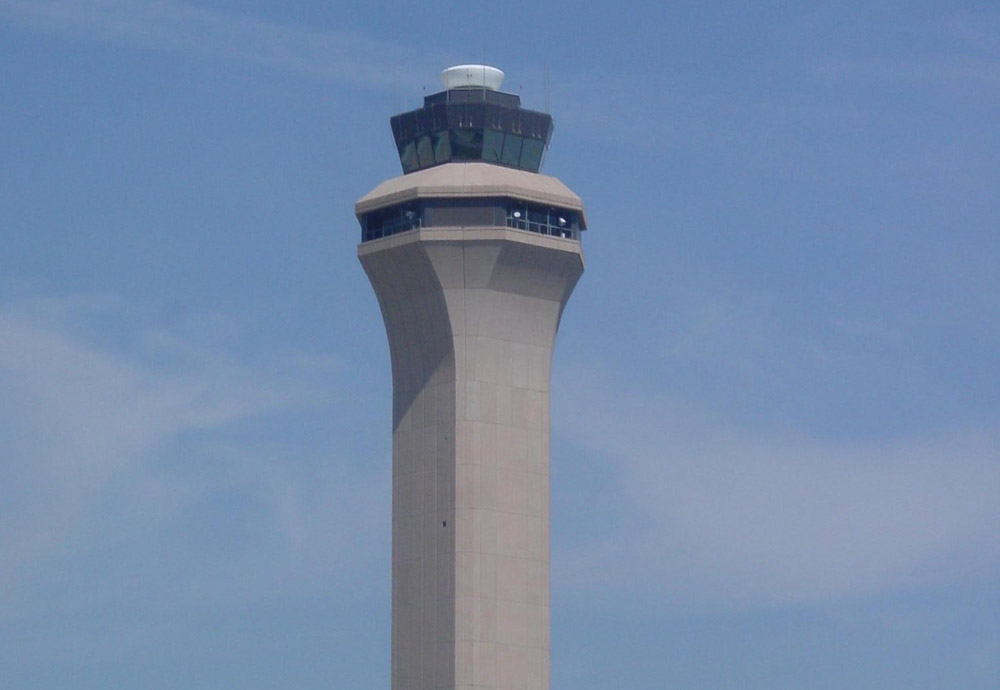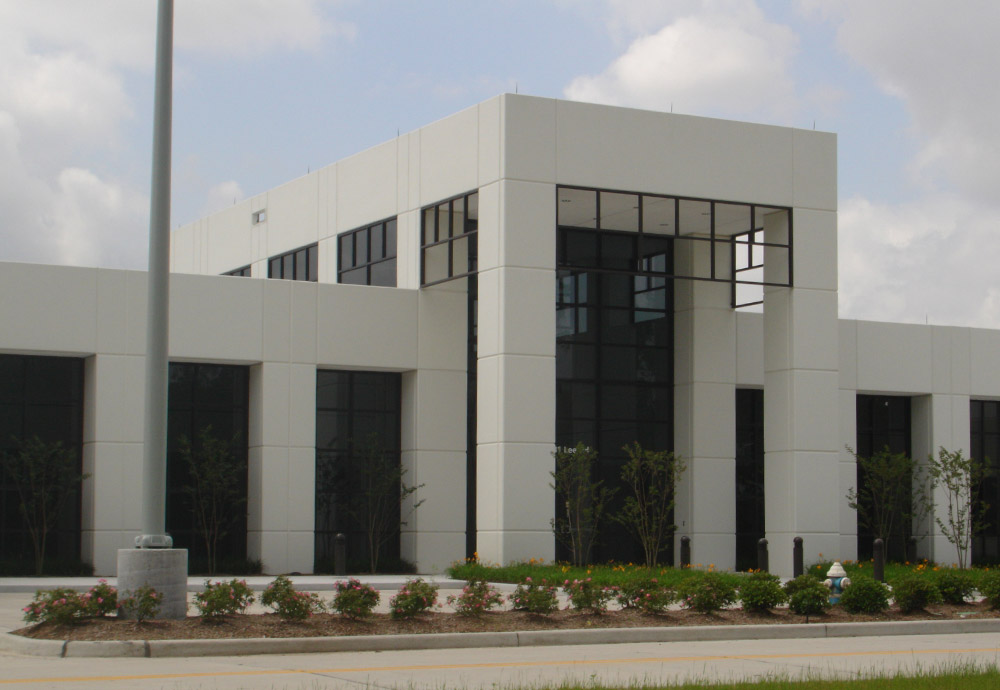Location: Houston, Texas
HAS 522F - Electrical Vault and Security Fence for new Runway 8L-26R - GBIA
Telecommunications Engineer. Provided the telecommunication engineering services to relocate all existing communications systems from the existing North Vault to the New North Vault. The communication systems include security, Airfield lighting, data, telephone, fire alarm and remote monitoring systems. New communication ductbanks were installed under this project with singlemode fiber optic cable to create an outer pathway for the airfield communication systems. Phasing is critical since the existing cabling support the airfield lighting and airport security systems. The design also included coordination with other ongoing project to facilitate work in other areas. The existing airfield lighting system was revised from a multimode star configured system to a more fault tolerant singlemode dual rotating ring configuration.
HAS 560 - North Cargo Apron - GBIA
Telecommunications Engineer. Provided the telecommunications and security system engineering and services for the North Cargo Apron project. The project consisted of adding two (2) new 3,750 foot taxiways, four (4) 600 foot interconnecting taxiways, airfield lighting, airfield signage, provisions for four (4) new air cargo facilities and three new AOA vehicle gates. The communications scope included the addition of new fiber optic cabling and communications ductbanks to provide access to the new North Cargo Apron Facility. The design included a new MDF Room to serve the site and activation of low voltage systems such as CCTV, Access Control, EFSO, phones, data and Environmental Controls. The security system design included access control at three AOA entrance gates including CCTV access control to the MDF Room. Assisted in coordination the quality control for the EFSO system, Fueling system, and electrical ductbank systems.
HAS 647 - Reconstruction of Taxiway ’NB’ - GBIA
Electrical Engineer. Provided the electrical engineering services for the relocation of the existing parallel taxiway approx 42’ north. The scope of work included the following items: remove and replace taxiway ’NB’ edge lights with new can mount LED edge lights; remove and replace taxiway ’NB’ centerline lights and install new lights as required to conform with the HAS SMGCS plan and Operations, replace the airfield signage with new signage designed to meet Group VI requirements, correct existing RGL circuits on both R/W 8R-26L and R/W 8L-26R currently in non-compliance due to use of ’Y’ connectors, remove and replace associated conduit and cables, correct circuit overloads, modify cross taxiway centerline lights for new geometry, modify all structures in TSA to aircraft rated, correct all circuits impacted due to taxiway relocation, add new regulators to support RGL modifications and adjust ALCMS for airfield modifications. Several studies were performed including: study use of LED technology for centerline and signs, study quality of insulation resistance for R/W 8R-26L, study existing RGL circuits in North Airfield Complex, and study existing ALCMS cable infrastructure and make more fault tolerant. Finally, due to the critical nature of the taxiway ’NB’ location, construction phasing was implemented to provide temporary circuits and signs to better facilitate each phase. The estimated construction cost is $36 million.
HAS 555 - Terminal ’B’ and ’C’ North Ramp Modifications - GBIA
Telecommunications Engineer. Provided the telecommunication engineering services to remove existing airfield cabling and provide new cabling within a new ductbank system. Phasing is critical since the existing cabling support the airfield lighting and airport security systems. The design also included coordination with other ongoing project to facilitate work in other areas. A study was done on the existing airfield cabling, quantities and routes and the new infrastructure designed would provide several main backbone arteries for the Houston Airport System.
HAS 500J - FAA Ductbank Infrastructure - GBIA
Telecommunications Engineer. Provided telecommunication engineering services to re-route existing FAA cabling to the Air Traffic Control Tower to avoid possible outages with ongoing construction. Phasing of the new cabling is very critical since the existing systems support the airfield control equipment.
HAS 648 - Rehabilitation of Taxiway ’WA’ and ’WB’ and New Electrical Vault - GBIA
Electrical Engineer. The scope of this project included rehabilitation of the parallel Taxiway ’WA’ and Taxiway ’WB’ and also included a new vault building. Provided the electrical engineering services for the project consisting of new centerline lights for CAT IIIB operations for the parallel taxiways including all interconnecting taxiways, replacement of all taxiway edge lighting, modifications to the existing Runway 15L-33R and 15R-33L edge lights from 20A to 6.6A, new signage, ductbanks and communications. This design also included a new 3,750 sf electrical vault consisting of 1600A electrical service with redundant roll-over primary utility and 1000KVA generator; 48 regulators, new IT and FAA rooms. Also included with this design was the decommissioning of the existing west vault and a new airport wide ALRCS upgrade. The construction cost was $45 million.
HAS 423 - Rehabilitation of Runway 9-27 - GBIA
Provided the electrical and telecommunication system engineering services. The communication services included providing a Preliminary Engineering Report for evaluation of the existing airfield lighting remote control system (ALRCS) communication infrastructure including existing system performance, pathways, redundancy and reliability as well as suggested modifications to provide a more robust airfield lighting control system. For the electrical engineering services, the scope of work included the complete removal and installation of airfield lights, signage and pathways for all areas beyond the RSA. New main ductbank arteries were provided outside the RSA, all manhole covers were placed in the south complex, all signage panels were replaced or modified, new RGL were installed, all existing circuits were removed and replaced. The electrical vault was modified to accommodate the scope of work and the ALRCS system was revised to accommodate the electrical modifications. The project construction cost was estimated at $38.8 million.
